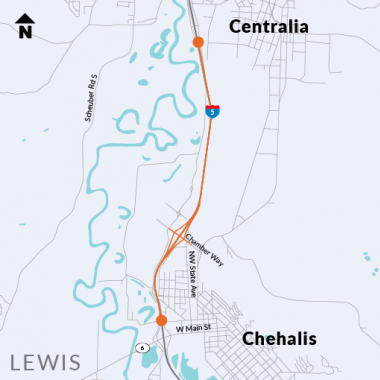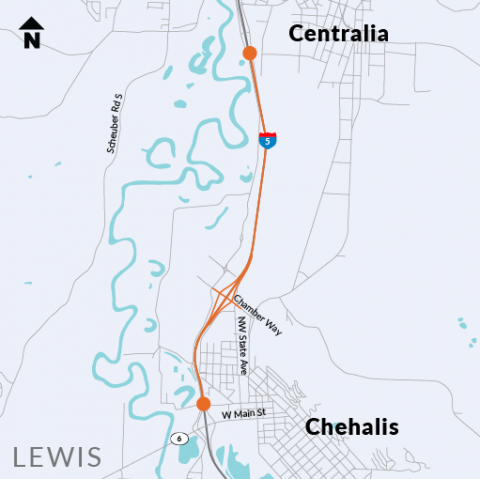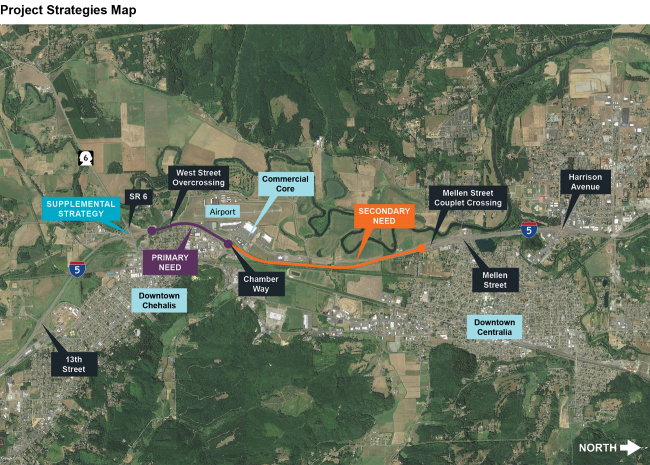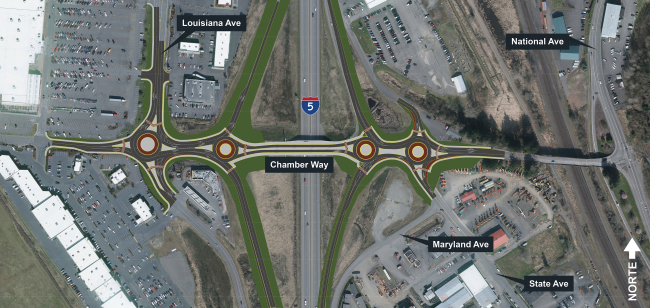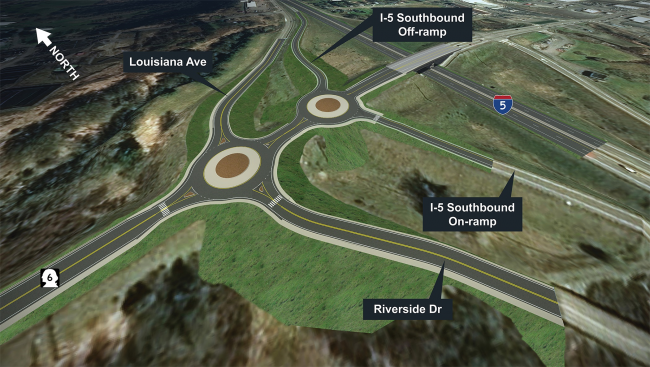Project overview
To ensure smooth travel for both commuters and cargo across Washington State, contractor crews will implement an advanced technology system. This system optimizes the existing roadway infrastructure to alleviate congestion, enhance safety, and ensure reliable trips along the I-5 corridor in Lewis County, between milepost 75.45 in Chehalis to milepost 82.80 in Centralia.
What to expect
Once construction starts, contractor crews will install ramp meters along the following on-ramps leading to I-5:
- Northbound I-5 ramp meters:
- Exit 76 - 13th Street/Southwest Parkland Drive (on-ramp)
- Exit 77 - SR 6 (on-ramp)
- Exit 79 - Chamber of Commerce Way (on-ramp)
- Southbound I-5 ramp meters:
- Exit 77 - SR 6 (on-ramp)
- Exit 79 - Chamber of Commerce Way (on-ramp)
- Exit 81 - SR 507 Mellen Street City Center (on-ramp)
- Exit 82 - Harrison Avenue (on-ramp)
Additionally, during construction, crews will install variable message signs (VMS), traffic cameras and data station system to improve travel along this nearly 7.5 mile stretch of I-5.
Closures
Travelers in both directions of I-5 can expect occasional daytime and nighttime single lane and ramp closures, with delays. Please note, to minimize traffic impacts and delays, no two consecutive on-ramps, off-ramps, or intersections shall be closed at the same time and in the same direction, and only one ramp at an interchange shall be closed at a time.
While full ramp closures may be necessary, advanced public notice will be provided before implementing these closures.
How ramp meters work
Ramp meters are traffic signals that operate according to real-time conditions on the highways and ramps. The traffic signals provide consistent gaps in on-ramp traffic, preventing multiple vehicles from entering the highway at the same time. More efficient merging allows drivers to continue traveling smoothly and keeps traffic flowing at highway speeds. Ramp meters also reduce the potential for collisions by 30 percent.
How to use ramp meters
Drive the vehicle up to the white stop line to trigger the ramp meter. If the light is red, stop at the white line. When the light turns green, accelerate and merge onto the highway. Most ramp meters allow only one vehicle to proceed with each green light, creating a four- to 15-second delay between cars entering the highway.
On-ramp delays
While ramp metering benefits drivers already on the highway, it can produce delays for drivers merging onto the highway. Unlike other states, ramp meters in Washington are not set to run during a scheduled time of day. Rather, WSDOT ramp meters adapt and operate based on real-time traffic conditions on the freeway. Additionally, WSDOT traffic crews will fine-tune ramp meter operations and closely monitor traffic at each ramp following activation.
WSDOT’s goal is to balance the needs of drivers merging onto the highway with the needs of drivers already there.
This project will focus on reducing congestion, and improving safety and travel reliability along the I-5 corridor between Chehalis and Centralia, in Lewis County.

